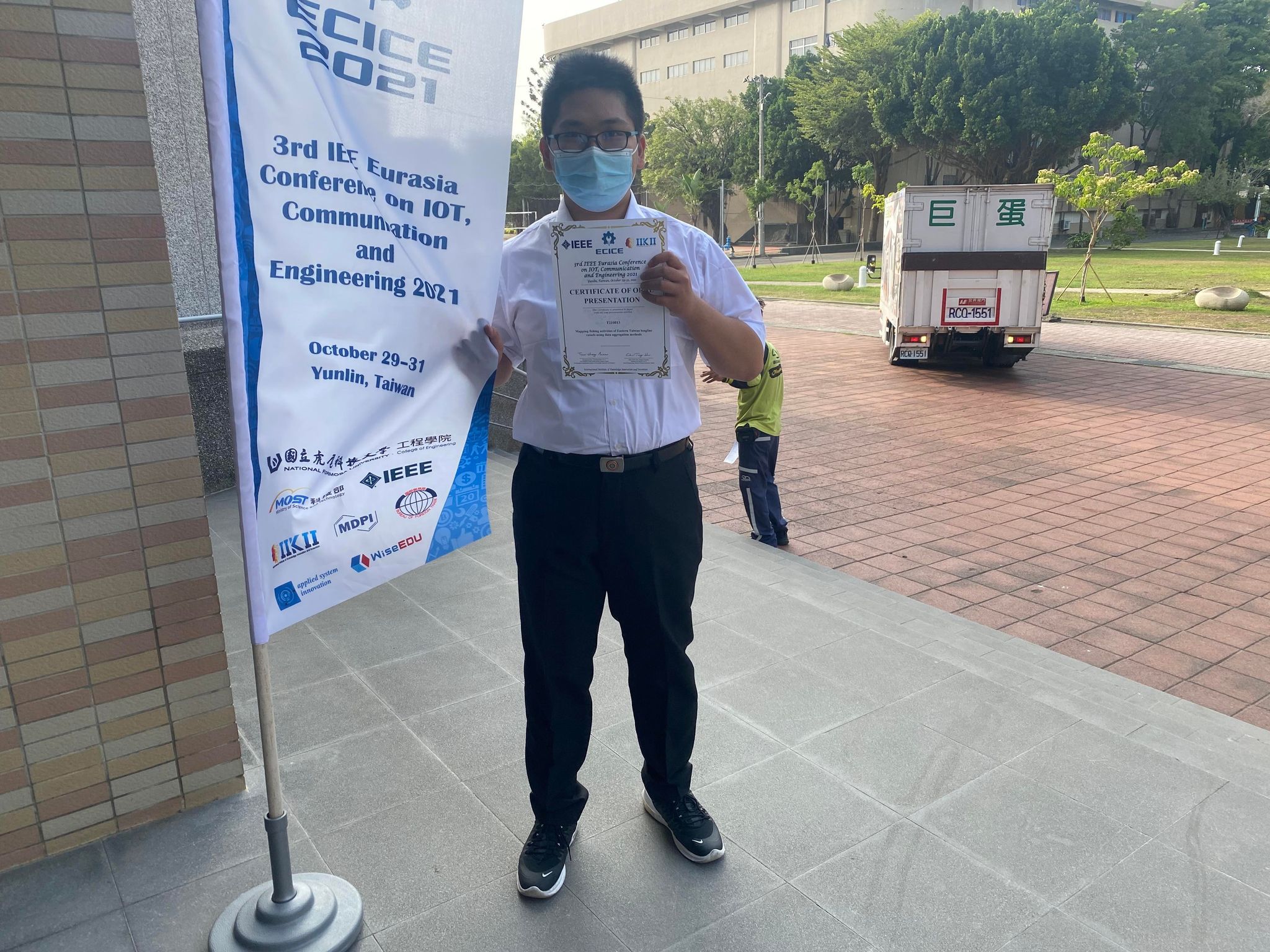 Congratulations to Jhih-Cian Lin for his research effort, receiving the best paper award at the 2021 IEEE Eurasia Conference on IoT, Communication, and Engineering (IEEE ECICE 2021)!
Congratulations to Jhih-Cian Lin for his research effort, receiving the best paper award at the 2021 IEEE Eurasia Conference on IoT, Communication, and Engineering (IEEE ECICE 2021)!
Abstract – Illegal, unregulated, unreported, and overfishing have become a major problem when fishing becomes commercialized in many parts of the world. One of the critical activities in IUU research is to monitor the fishing activities of fishing boats by looking at their fishing gear and trying to estimate the catch amount of a specific fishing boat. Moreover, identifying the fish distribution in the natural environment and predicting its stock size can help ensure sustainability and prevent resource depletion by enforcing some limits to stop overfishing. Nevertheless, correctly identifying the population and their dwelling region is still a challenge this paper aims to solve.
Traditional researches focus on the trajectory of the fishing boat to approximate the region of their catch, where we bring about a novel method by looking at the course of the boat’s fishing gear, which is the actual device that catches fishes. This assumption is that some fishing boats lay fishing gears in a large area, i.e., drift nets, longline fishing, purse seine, which covers a much larger region than the boat traveled. We observe the AIS signals of fishing boats and try isolating the signals to determine whether it is a boat or a set of fishing gears deployed by that specific boat. We then group the signals of fishing boats with signals of their fishing gears to determine the area of operation of that vessel. This transformation of the traditional linear approximation of fishing operation into a two-dimensional coverage gives a new insight into how much of the ocean is actually utilized in fishing operations.
We collected 58 fishing vessels with their corresponding fishnet signals from June 2019 to December 2019 and analyzed the data of these fishing vessels and fishing gears. Our preliminary results show that using this method provides a better knowledge of the geographic distribution of fishes, showing over 40 times more actual coverage of the ocean being fished. With this new knowledge, future management and sustainability estimation of fish resources can be more accurate both in the geographical distribution and biological population indices.
Views: 784
 Advanced Computation Laboratory
Advanced Computation Laboratory